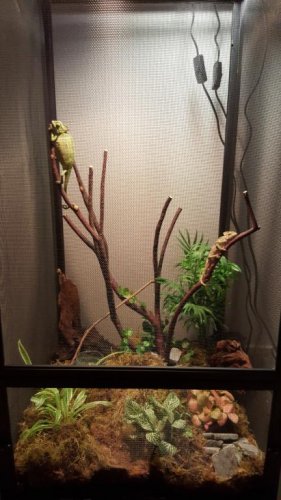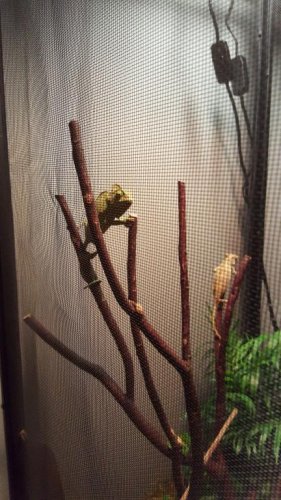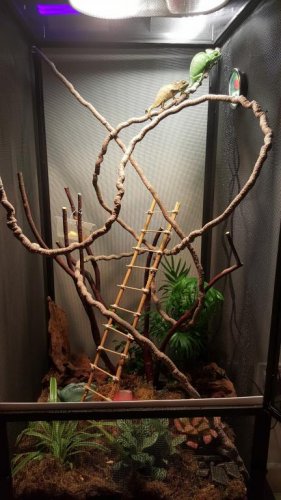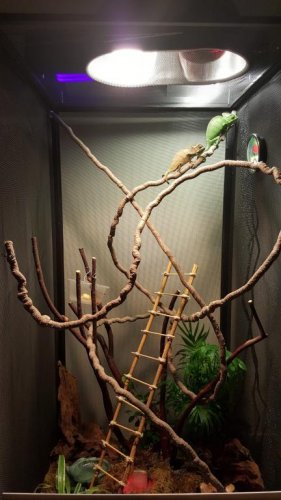chamchamq8
New Member
Hello i just purchased two veiled chams a week ago , the male is smaller and younger than the female and i put them in a screen reptarium with live moss and live tropical plants as u can see in the pics attached, i have also included a fogger in addition to manually misting the inclosure 2 to 4 times a day, i have put a UVB light and basking light for morning time as well as an infrared night light to keep them worm as i keep them indoors and the central AC could be quite be around 70 f at night, however since i got them they havent been interested in food that i have been offering them (Meal worms, and other small insects) i even left the food in their terrarium in a wide and deepish plastic container for them to hunt and eat but they havent been interested in the food whatsoever, the second day i got them i found that they ate 5 worms together however since that day till day they havent eaten anything..... Help please





